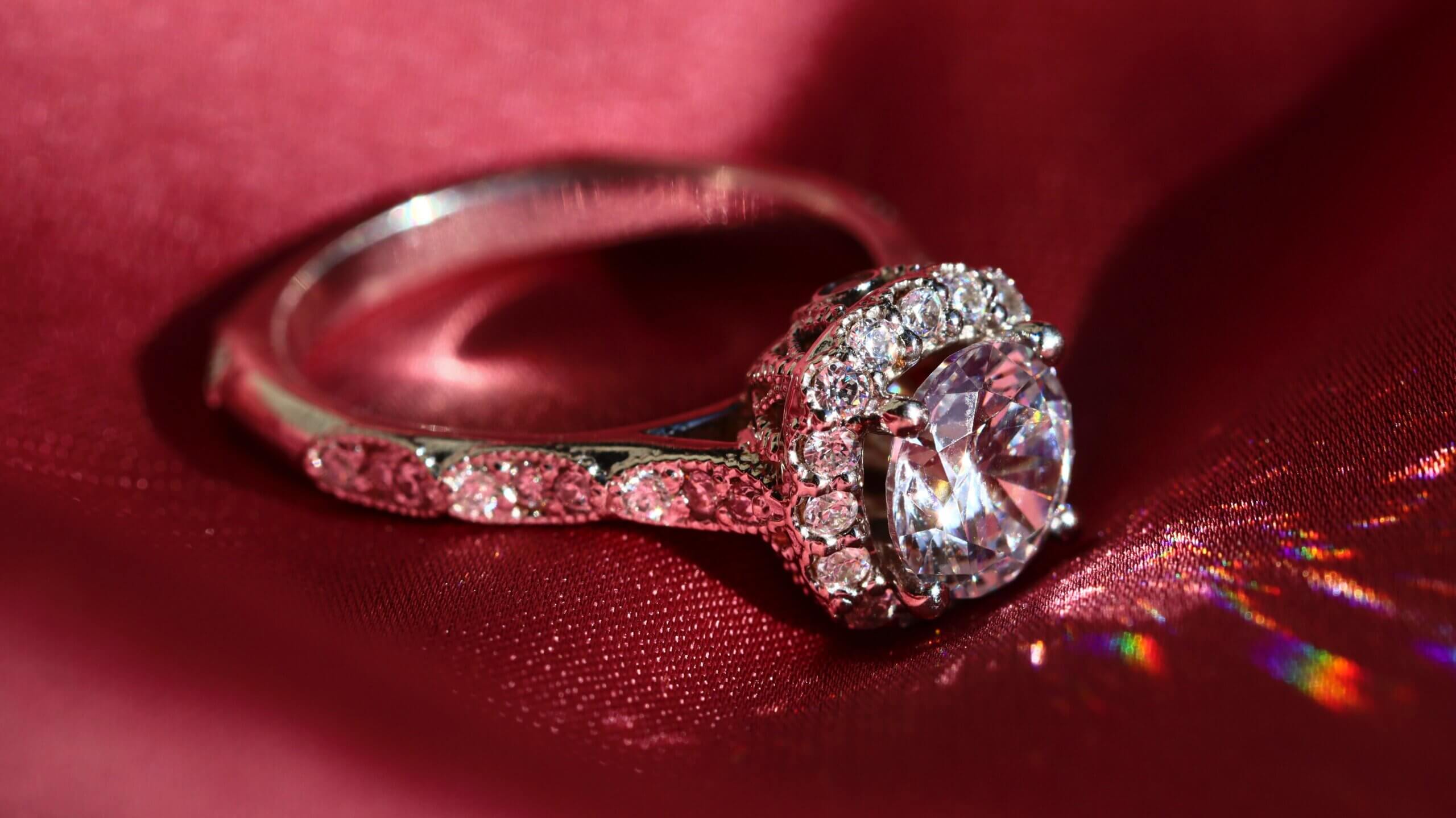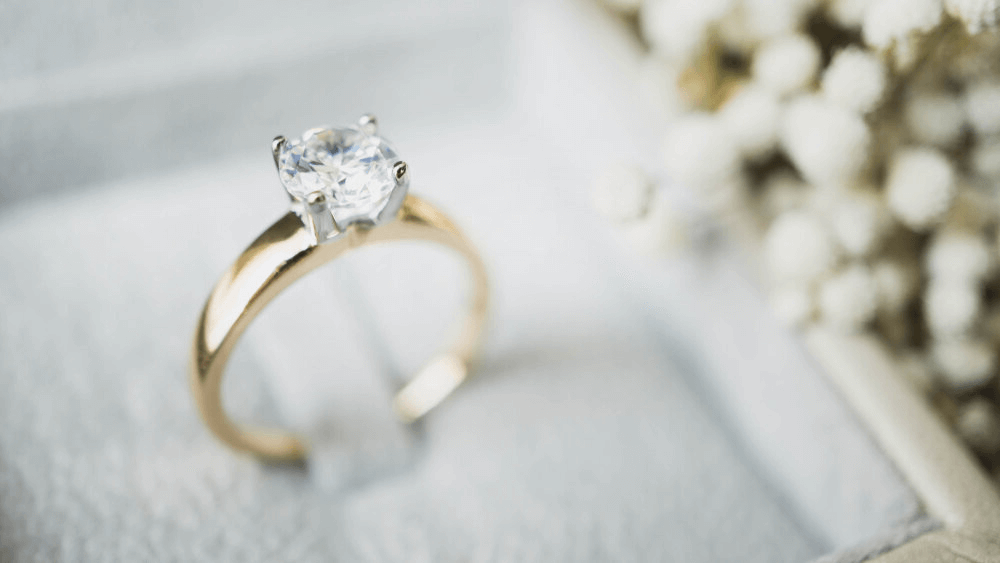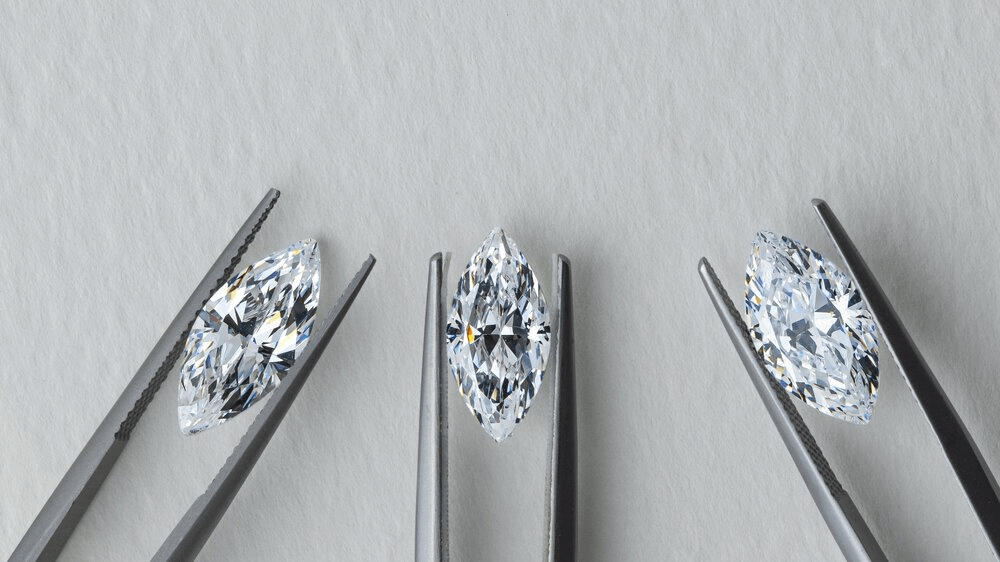The Hidden Facts Of Diamond’s Polish Grade

By Gary A.

Edited by Olivia H.
Published Sep 18, 2021
Edited on Dec 18, 2024
The way diamond polish influences a stone’s brilliance is often overlooked, but ensuring it’s up to par could make all the difference in your engagement ring—are you choosing wisely?

- 7 Quick Tips for Examining Diamond Proportion Ratio and Measurements When Buying an Engagement Ring
- Introduction
- The Polishing Process Explained
- GIA Standards: From Excellent to Poor
- Polishing vs Diamond Size: A Delicate Balance
- DIY Polishing: Myths and Realities
- Professional Diamond Polish Price
- Our Expert Take
- 10 FAQs
Before we dive deeper into the specifics, here are some practical tips to help guide your decision-making process:
7 Quick Tips for Examining Diamond Proportion Ratio and Measurements When Buying an Engagement Ring
- Tip 1: Understand the Basics of Diamond Proportions Educate Yourself on Key Terms: Familiarize yourself with terms like “table percentage,” “depth percentage,” and “crown angle.” These are critical components of a diamond’s proportions and greatly affect its overall appearance. Study Proportion Charts: Refer to diamond proportion charts specific to the shape you are interested in. These charts indicate the ideal proportions for different diamond shapes and can serve as a reference during your selection process.
- Tip 2: Examine the Diamond’s Symmetry Check for Symmetrical Facets: Ensure that the diamond’s facets are symmetrical and align correctly. A diamond with poor symmetry can redirect light inconsistently, impacting its brilliance. Use Symmetry to Assess Cut Quality: Symmetry is a good indicator of a diamond’s overall cut quality. A well-proportioned diamond will have symmetrical facets that enhance its ability to reflect light.
- Tip 3: Evaluate the Diamond’s Length-to-Width Ratio Know Ideal Ratios for Different Shapes: Each diamond shape has an ideal length-to-width ratio that maximizes its beauty. For instance, a classic round brilliant cut has an ideal ratio of 1:1, while an oval diamond has a more elongated ratio. Use Ratios to Determine Diamond Shape Appeal: The length-to-width ratio will affect the diamond’s overall shape appeal. A diamond that deviates significantly from its ideal ratio might not have the desired aesthetic.
- Tip 4: Pay Attention to the Table and Depth Percentage Assess the Table Size: The table is the flat facet on the top of the diamond. Its size, relative to the diamond’s overall diameter, is crucial. A table that is too large or too small can affect the diamond’s ability to refract light. Check the Depth Percentage: This measurement indicates how deep or shallow the diamond is. An ideal depth ensures that light entering the diamond is reflected internally and exits through the top, maximizing brilliance.
- Tip 5: Inspect the Girdle Thickness Examine the Diamond’s Girdle: The girdle is the perimeter of the diamond. Its thickness can impact the diamond’s durability and how it sits in a setting. Avoid Extremes in Girdle Thickness: A girdle that is too thin can make the diamond prone to chipping, while a girdle that is too thick can add unnecessary weight and affect the diamond’s balance.
- Tip 6: Look for Consistency in Facet Shapes and Sizes Check for Uniform Facets: Inconsistencies in facet shapes and sizes can indicate poor cut quality. Each facet should be proportionate and contribute to the overall symmetry of the diamond. Use Facet Consistency to Gauge Light Performance: A diamond with uniform and well-proportioned facets will have superior light performance, exhibiting more fire and brilliance.
- Tip 7: Consider the Diamond’s Overall Appearance Balance Proportions with Visual Appeal: While technical measurements are important, the diamond’s overall appearance should also be pleasing to the eye. Sometimes, a diamond may meet all technical criteria but still lack the desired sparkle or look. Trust Your Instincts: Ultimately, the choice of a diamond should resonate with your personal taste and the preferences of your significant other.
Now that you’ve got these practical tips, use Jeweler AI below to find the perfect engagement ring that suits your style and budget:
Introduction
Alongside sparkle, diamond’s smooth, glassy finish is one of the first things that comes to mind when we think of this beautiful mineral.
This reputation for perfection is, of course, derived entirely from the skill and time devoted to diamonds by countless gemologists, diamond cutters and jewelers who, over the years, have honed their techniques for turning an irregularly shaped and rough stone into something unmatched in beauty or shine.
One of the most important steps in this process comes toward the end of the diamond process. Polishing away tiny imperfections and bumps, and bringing out as much of the diamond’s bright, clear shine as possible, is vital, and tricky enough to get right that it is graded independently within a diamond’s GIA Report.
The Polishing Process Explained
Polishing refers to the process of removing very small imperfections (crystals) from the diamond’s surface after the stone has been cut into shape.
While the term may conjure images of a chamois cloth and a tub of ‘diamond polish’, the process actually requires its own set of specialist tools. A diamond polishing wheel (or ‘scaif’) is coated in diamond dust, which is hard enough to gradually wear down the minor bumps on the facets of the diamonds.
Understandably, this work requires a massive amount of precision. These days, diamond cutters use calibrated machines to ensure the greatest level of accuracy is met, but it is still all too easy for polishing features to appear on the diamond and, at times, decrease its value.
GIA Standards: From Excellent to Poor
The GIA diamond polishing grades diamond polish from Excellent to Very Good, Good, Fair and Poor, depending on the extent of the flaws caused during the polishing process.
These grades are easy enough to memorize, but why do we need to know the polish grade of our diamond? Because many common polishing features can negatively impact the visual appearance and light performance (sparkle) of a diamond.
Many of them are, as with clarity and symmetry, only really noticeable under 10x magnification. Diamonds with ‘Excellent’ and ‘Very Good’ polish will be visually clean, and some ‘Good’ diamonds will be, too.
The scaif can cause diamonds to take on scratches, nicks, polish lines or even burn marks. In many cases, these defects will sound worse than they look, but should still be avoided as much as possible. A diamond may also take on something known as ‘lizard skin’, which refers to a textured patch on the surface that will significantly impact the diamond’s value on the market.
The Significance of ‘Excellent’ Polish
A diamond with an ‘Excellent’ polish grade is one that will feature no flaws under 10x magnification – and, for that reason, will of course appear eye clean.
A grade of Excellent guarantees that you will never notice any marks made by the diamond polishing wheel, and that the diamond’s surface will appear and feel totally smooth and free from any scratches or texture.
Polishing the diamond is a very important step in the journey from rough stone to stunning engagement ring but, to you, the diamond’s polish grade holds a little less weight in your decision. Polish is nowhere near as important as some of the other features you need to consider when buying a diamond.
Visible polishing features can have a pretty major impact on a diamond’s appearance. In worst-case scenarios, they can prevent the diamond from sparkling as much as it should, and appear as distracting blemishes that turn an otherwise beautiful diamond into something that causes more disappointment than awe.
Even still, provided you stick to the higher grades for polish, you don’t need to spend too much of your time worrying about this aspect. Besides, nowadays, thanks to the incredibly advanced tools diamond cutters have at their disposal, many diamonds sit comfortably within the ‘Very Good’ and ‘Excellent’ polishing grades, making it very easy to find a quality diamond.
Polishing vs Diamond Size: A Delicate Balance
In most cases, polishing is designed to remove the minute bumps cutting leaves on the surface of the diamond, not to remove significant bulk from the stone.
The diamond cutter does not polish the rough stone. By the time it is polished, much of the excess has already been cut away, and the facets have been shaped. Ideally, this will mean that the diamond only needs smoothing.
In some instances, it can be decided that a diamond will look better if it is returned to the polishing wheel. This may be done to remove an inclusion or blemish, or to improve the color of the diamond but, as we mentioned above, this is rare.
DIY Polishing: Myths and Realities
You cannot remove surface texture yourself. You can (and should) perform regular care and maintenance on your diamond, and polish away any dust or oils that are beginning to build up on the stone.
Obviously, you don’t need a polishing wheel covered in diamond dust to do that – nor would you want to, since it would be all too easy for you to damage the diamond. Learning how to polish diamonds is a craft – not something you can take on with no experience or tools.
Regular Diamond Maintenance
There’s no specific amount of time you should wait between polishes. Depending on your lifestyle – and, more specifically, the amount of wear and tear your diamond ring goes through each year – your diamond may never need polishing, or it may need to be seen to once every few years.
Either way, it is important for you to take your diamond ring to be checked over once every six months or so.
A jeweler will inspect it under magnification, and make sure that the diamond has not suffered any damage, and that the ring setting itself is still keeping the stone firmly in place. Even if your diamond does not need a scratch ‘buffed out’ of it, it still needs to be checked by an expert.
Remember, a superficial scratch won’t impact your diamond’s shine. So, if your diamond has a dulled sparkle, then it needs to be cleaned (something you can do at home) rather than re-polished.
Simple At-Home Cleaning Techniques
Once a week or so, we should all soak our diamond rings in a mild, soapy water, and give them a gentle brush with a soft-bristled toothbrush to remove anything that has attached itself to the surface at work or at home. This is more than enough, provided the diamond hasn’t sustained any damage.
If your diamond sustains a scratch or two during its years of wear, the good news is that you can take it to be repolished by a skilled jeweler. This will smooth the surface of the diamond once again, and ensure many more years of it looking flawless on your finger.

Professional Diamond Polish Price
The cost of a diamond polish depends on the jeweler, and on the amount of work a diamond needs in order to look perfect again but, in general, these services cost less than $100.
Remember that, when it comes to ensuring the longevity of your diamond’s beauty, you really can’t put a price on it. Diamonds are incredibly hard, resilient things, but they’re not totally immune to surface scratches and marks that, once there, are pretty much impossible to forget about.
The cost of getting it polished is definitely worthwhile and offers a great level of reassurance for anyone who’s nervous about damaging their ring. Remember that diamonds are nowhere near as delicate as they look, and can go years without any noticeable damage, but it definitely helps to know that any little marks can be buffed out.
Our Expert Take
A diamond that is not polished enough will feel bumpy. True, these bumps will be very small and not necessarily all that easy to notice when the diamond is set within the ring itself, but they will still be there, and they will detract from the overall beauty of the diamond.
Alternatively, a diamond that has been polished poorly will also suffer from unwanted texture. It may feel rough, bumpy, or grazed, and lose that flawless, glassy, smooth finish that we all want to find in our chosen diamonds.
This is why the overwhelming majority of sellers and jewelers only list diamonds with an Excellent or Very Good diamond polishing grade since those with visible polishing features simply aren’t the investment.
So, rather than ‘worrying’ about your diamond’s polish, it’s more important that you are aware of the necessity to stay above a certain grade during your search and to double-check that your chosen diamond’s polish meets a strong standard – although, in all likelihood, it will.
10 FAQs
- Q: What is Diamond Polish?
- A: Diamond polish refers to the smoothness of a diamond’s surface after cutting. It affects how cleanly the diamond reflects light, impacting its sparkle and overall appearance.
- Q: How Important is Diamond Polish in an Engagement Ring?
- A: Diamond polish is quite important in an engagement ring as it enhances the diamond’s brilliance and fire. A higher polish grade means fewer surface imperfections, leading to a more radiant and eye-catching diamond.
- Q: What Are the Best Polish Grades to Look for?
- A: Aim for diamonds with polish grades of “Excellent” or “Very Good.” These grades ensure minimal surface flaws and optimal light reflection, enhancing the diamond’s brilliance.
- Q: Can You See Polish Imperfections with the Naked Eye?
- A: Generally, polish imperfections in diamonds with high polish grades (Excellent or Very Good) are not visible to the naked eye. They are usually detectable only under magnification.
- Q: Does the Diamond’s Shape Affect the Importance of Polish?
- A: Yes, the diamond’s shape can influence the visibility of polish imperfections. Shapes with more facets, like round brilliants, can make imperfections more noticeable.
- Q: How Does the Setting Influence the Diamond’s Polish?
- A: The ring setting can either highlight or obscure the polish quality. Settings that expose more of the diamond, like prong settings, make polish quality more crucial for the ring’s overall appearance.
- Q: Can a Diamond Be Repolished If It Has Imperfections?
- A: Yes, a diamond can be repolished to remove or reduce surface imperfections. However, this process might slightly reduce the diamond’s size and requires skilled craftsmanship.
- Q: Is It Necessary to Use a Magnifying Tool to Inspect Diamond Polish?
- A: While not necessary, using a jeweler’s loupe or microscope can help you identify any subtle polish imperfections that might affect the diamond’s brilliance.
- Q: Does Polishing a Diamond Reduce Its Carat Weight?
- A: Polishing usually involves removing only a very small amount of material. Any reduction in carat weight is typically minimal and often necessary to enhance the stone’s overall beauty.
- Q: Should I Prioritize Diamond Polish Over Other Factors Like Cut or Clarity?
- A: While diamond polish is important, it should not be prioritized over the cut, which is the most crucial factor in a diamond’s appearance. Polish should be considered in conjunction with other factors like cut, color, and clarity for a balanced evaluation.
Discover the elegance of perfectly polished diamonds with Jeweler AI – your gateway to the finest engagement rings tailored to your unique requirements!
FOLLOW-UP GUIDE SERIES












